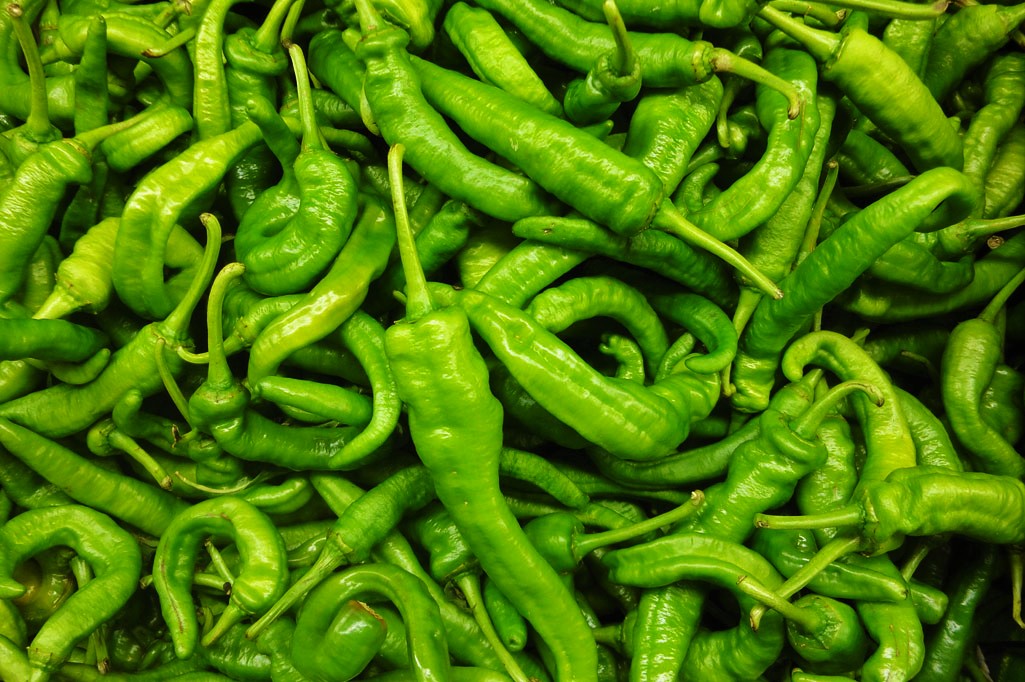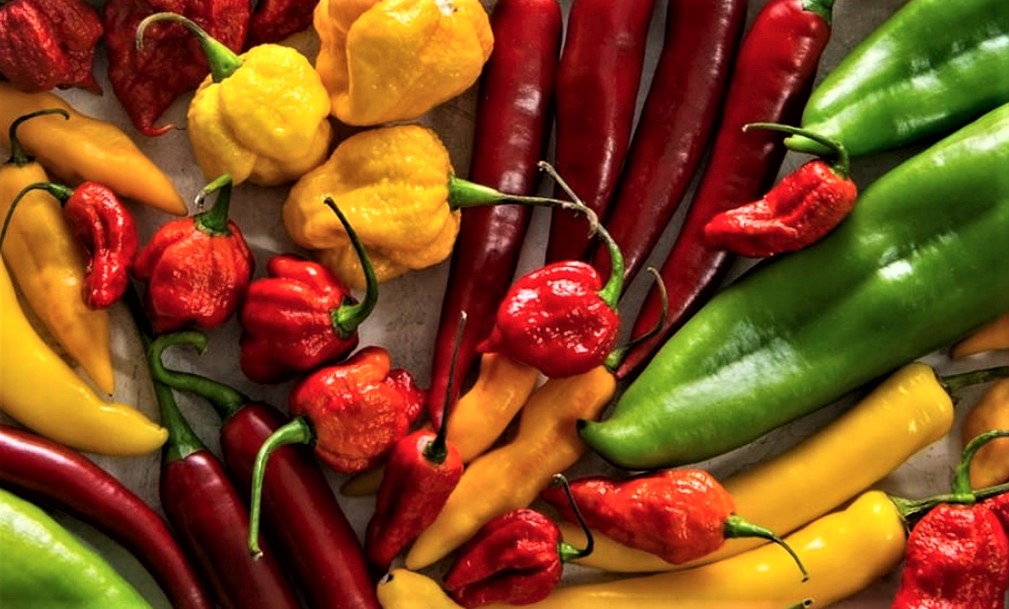Chili Pepper
Chili is a fruit, although many of them do not have the flavor that we usually associate with fruit.
Chili peppers are harvested from the seeds of the Capsicum plant, which is part of the nightshade family. This makes them cousins to a variety of foods including tomatoes, eggplants, and goji tomatoes.
Chili is grown in tropical countries around the world, but it originated in South America. Christopher Columbus is said to have brought chilies to Europe, calling them “peppers” in the mistaken belief that they are related to black pepper.
Hot pepper is a small shrub that grows up to one meter in height. It originates from the Central American region, where it has been used as one of the main spices in Mexican cuisine for centuries. Later, Spanish and Portuguese explorers introduced it to the rest of the world in the 16th and 17th centuries. Today, chili is grown in many parts of the world as an important crop. Many cultivars of pepper are grown around the world. Depending on the cultivar, chili pepper plants produce flowers that develop into fruit pods that vary in size, shape, color, and pungency. Also, depending on the cultivar, their peppers range from sweet and meaty (Mexican style) to hot like the mild Nag Jalokiya pepper of the Indian subcontinent.
Chili peppers are measured in “Scoville Heat Units” (SHU). On the Scoville scale, sweet peppers are 0, jalapeño around 2,500 to 4,000 units, and Mexican habañeros can have 200,000 to 500,000 units.
Inside, each chili pod contains many small, white or cream-colored, ovoid, flat fruits that stick to the white placenta. For harvesting, peppers are taken when they are green, or when they are ripe and dry on the plant itself. Generally, they are ready to harvest as soon as they ripen and turn red. They are then left to dry in the sun and dry.
Peppers have a strong spicy taste that comes from active alkaloid compounds: capsaicin, capsanthin and capsorubin.
Process to Grow pepper
All peppers are best when planted in hot soil. If you want to plant them in the ground, wait until the temperature is above 50 degrees F and the fear of frost has passed. Exposure to cold temperatures can prevent plants from flowering, which can delay fruit production.
You can also grow your chili indoors. At first they are planted, as time goes on the plant will produce good fruit at the end of the growing season, that is in the summer.
Also, hot peppers have a long growing season. When starting your plants indoors, start at least 6-8 weeks before the average last frost date for your area.


Plant the seeds in a mixture of top soil starting and place the seeds about ¼ inch into the soil. Place the newly planted seeds in a warm place, because they love heat.
Once the seeds have sprouted, keep the soil well moist and make sure they stay in a light spot. When the fruit is big enough to handle without damaging them, you can push the plant into the garden; usually around May.
When you grow in the soil, be sure to mix some kind of compost into the soil first, because this will make the soil fertile, which will make it healthier. of your plants. Space your pepper plants about 18 to 36 inches apart. There should be about 2 to 3 feet between rows. Once the plants are mature, they will be about 3 feet tall.
Health Advantages of Chili peppers
Can reduce the risk of cancer
Chili peppers also provide a natural remedy for fighting cancer. According to the American Association for Cancer Research, capsaicin and antioxidants in chili peppers can kill cancer cells in leukemia and prostate cancer. This is largely due to the high antioxidant and anti-inflammatory properties of chili peppers.
For example, in the case of prostate cancer, capsaicin slows the growth of prostate cancer cells by inducing the destruction of the main cell lines. Similar effects can be seen in the breast, pancreas and intestines.
Provides joint pain relief
Besides being a source of pain for headaches and migraines, chili peppers can be used to reduce joint pain. In fact, you can apply chili peppers to the skin to reduce the presence of chemical P. Chemical P is responsible for sending pain messages to the brain. Capsaicin binds to pain receptors and causes a burning sensation that can cause your pain receptors to become desensitized over time. In this way, capsaicin works as a pain reliever. Typically, it can be used to treat shingles, joint pain, and HIV-related neuropathy.
Supports cardiovascular health
Chili paste can also be a great natural way to support your cardiovascular system and prevent heart disease. Chili paste is rich in potassium, a mineral that has many functions in the human body. Potassium combined with folate can reduce your risk of developing heart disease. In addition, potassium can help relax your blood vessels, which helps blood flow throughout your body. Chili cream also contains riboflavin and niacin. The latter is responsible for maintaining good cholesterol levels and, in turn, reduces the risk of heart disease. Chili paste can also protect your blood lipids from free radicals.
For example, a study found that eating fresh chili peppers makes blood fat resistant to oxidation, which damages free radical triglycerides and cholesterol.
Reduce the risk of type 2 diabetes
In addition to supporting your heart health, chili peppers can reduce the risk of developing high insulin levels, which is a symptom of type 2 diabetes.
According to the American Journal of Clinical Nutrition, many Australian scientists have found that food containing chili can make the right insulin to reduce blood sugar levels. This is a fact that is especially useful for people with a high BMI or who are overweight. Finally, remember that chili peppers are rich in antioxidants, cartenoids and vitamin C. These factors also contribute significantly to the regulation of insulin.
Can improve cognitive function
One of the main ways to maintain good health is to get adequate oxygen and iron. Fortunately, chili peppers are rich in iron. This results in increased blood flow and hemoglobin production in your brain. In turn, chili peppers can help improve your performance. In addition, they can also reduce your risk of developing mental illnesses such as dementia and Alzheimer’s disease.

